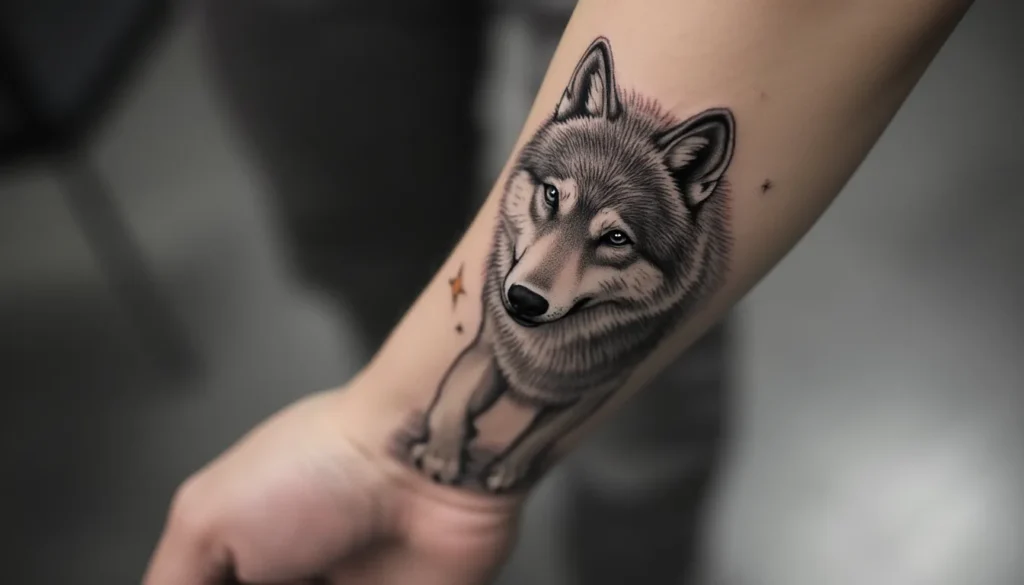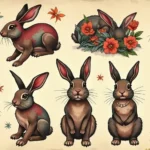Wolf tattoos have captured our imagination for centuries, representing some of the most powerful and meaningful symbols in body art. These striking designs go far beyond their aesthetic appeal – they embody deep spiritual significance that resonates with people from all walks of life.
When we see a wolf tattoo, we’re looking at a symbol that speaks to our primal instincts and deepest desires for connection. Wolves represent loyalty, family bonds, and the strength that comes from unity. They’re also fierce symbols of independence and survival, making them perfect for those who’ve overcome life’s greatest challenges.
Whether you’re considering your first wolf tattoo or you’re simply curious about what these magnificent creatures represent, understanding their symbolism can help you make a more meaningful choice. We’ll explore the rich tapestry of meanings behind wolf tattoos and discover why they continue to be one of the most popular tattoo choices worldwide.
What Does a Wolf Tattoo Symbolize?
Wolf tattoos embody profound meanings that resonate across cultures and personal experiences. These powerful designs represent loyalty as their primary symbolism, reflecting the unbreakable bonds wolves form within their pack structure. Family connections take center stage in wolf tattoo meaning, symbolizing the fierce protection and devotion wolves demonstrate toward their offspring and pack members.
Independence emerges as another core symbolic element in wolf tattoo designs. Wolves can survive alone when circumstances demand it, making them perfect representations for individuals who value self-reliance and personal strength. This duality between pack loyalty and individual capability creates compelling symbolic depth that attracts many tattoo enthusiasts.
Leadership qualities find expression through wolf tattoo symbolism, particularly through alpha wolf imagery. These designs represent natural authority, decision-making prowess, and the ability to guide others through challenging situations. Many people choose wolf tattoos to embody these leadership characteristics in their personal and professional lives.
Spiritual connections form another important layer of wolf tattoo meaning. Various cultures view wolves as spiritual guides, messengers between worlds, and symbols of intuition. Native American traditions particularly emphasize the wolf’s role as a teacher and pathfinder, making these tattoos meaningful for those seeking spiritual guidance.
Survival instincts and resilience manifest strongly in wolf tattoo symbolism. Wolves adapt to harsh environments, overcome obstacles, and persist through difficult seasons. This symbolism appeals to individuals who’ve overcome personal challenges or want to represent their inner strength and determination.
Protection serves as a fundamental meaning in wolf tattoo designs. Wolves fiercely defend their territory and loved ones, making them ideal symbols for those who prioritize safeguarding their family, values, or beliefs. This protective symbolism often combines with parental imagery in family-focused wolf tattoo designs.
Freedom and wildness represent core symbolic elements that distinguish wolf tattoos from domesticated animal designs. Wolves remain untamed even though human expansion into their territories, symbolizing the preservation of natural instincts and rejection of societal constraints.
Ancient and Cultural Meanings of Wolf Tattoos
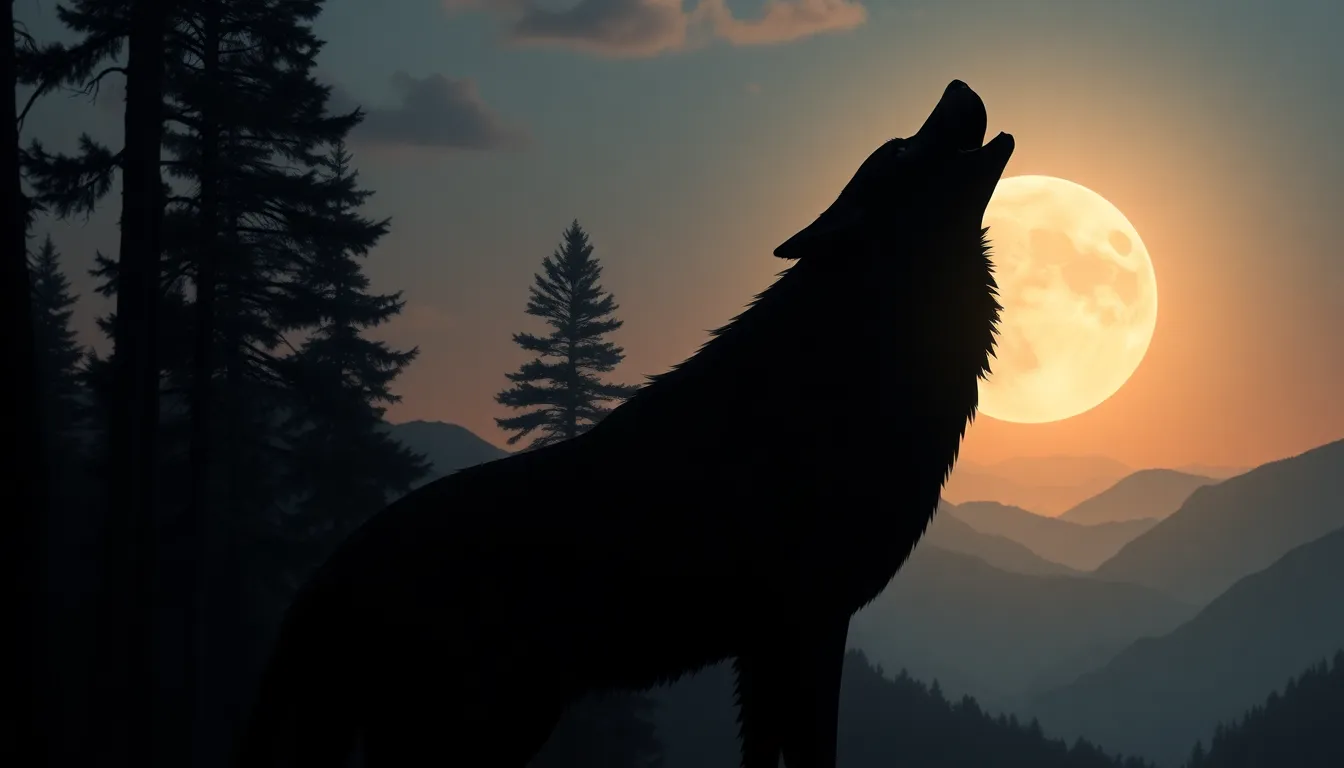
Ancient civilizations across continents have revered wolves as sacred beings, infusing modern wolf tattoos with layers of spiritual and cultural significance. These deep-rooted traditions provide the foundation for contemporary wolf tattoo symbolism.
Native American Wolf Symbolism
Native American tribes consider wolves sacred teachers and spiritual guides in their traditional belief systems. Cherokee traditions view wolves as pathfinders who lead souls through life’s challenges, while Lakota culture associates wolves with loyalty and courage in battle. Ojibwe mythology depicts wolves as protectors of the spirit industry, serving as intermediaries between earthly and divine realms.
Wolf clan members in various tribes receive exact spiritual responsibilities, including healing practices and tribal leadership roles. Pueblo communities celebrate wolves during winter ceremonies, honoring their hunting wisdom and pack unity. Inuit legends describe wolves as shape-shifting spirits capable of communicating with ancestors, making wolf tattoos popular among those seeking ancestral connections.
Plains tribes incorporate wolf imagery into warrior traditions, believing wolf spirits grant strength and tactical intelligence. Apache culture recognizes wolves as symbols of family devotion, reflecting the importance of kinship bonds in tribal society.
Celtic and Norse Wolf Traditions
Celtic mythology features wolves as guardians of ancient forests and symbols of transformation in druidic practices. Irish legends tell of warriors who could transform into wolves, gaining supernatural strength and battle prowess. Scottish clan traditions include wolf totems representing fierce independence and territorial protection.
Norse mythology presents wolves as complex figures embodying both destruction and wisdom. Fenrir, the giant wolf of Ragnarok, represents untamed power and inevitable change in Viking lore. Odin’s wolves Geri and Freki symbolize hunger for knowledge and the warrior’s feast in Valhalla. Viking warriors wore wolf pelts believing they channeled lupine ferocity and tactical cunning during raids.
Celtic knot designs often incorporate wolf motifs, representing the eternal cycle of life, death, and rebirth. Welsh mythology describes wolves as psychopomps, guiding souls between worlds and serving as messengers for ancient gods.
Asian Wolf Mythology
Japanese folklore presents wolves as benevolent mountain deities called “ookami,” literally meaning “great god.” Shinto traditions honor wolves as protectors of crops and villages from wild boar and other destructive animals. Ainu culture in northern Japan reveres wolves as divine messengers, believing they carry prayers to mountain spirits.
Chinese mythology associates wolves with military strategy and disciplined hunting tactics. Mongolian traditions celebrate wolves as ancestors of great khans, symbolizing leadership qualities and territorial expansion. Turkish legends describe the gray wolf as the mother of the nation, leading ancient tribes to their promised homeland.
Korean shamanic practices include wolf spirits as powerful guides for healing rituals and spiritual cleansing ceremonies. Tibetan Buddhism recognizes wolves as symbols of mindfulness and awareness, representing the balance between instinct and wisdom in meditation practices.
Core Symbolic Meanings of Wolf Tattoos
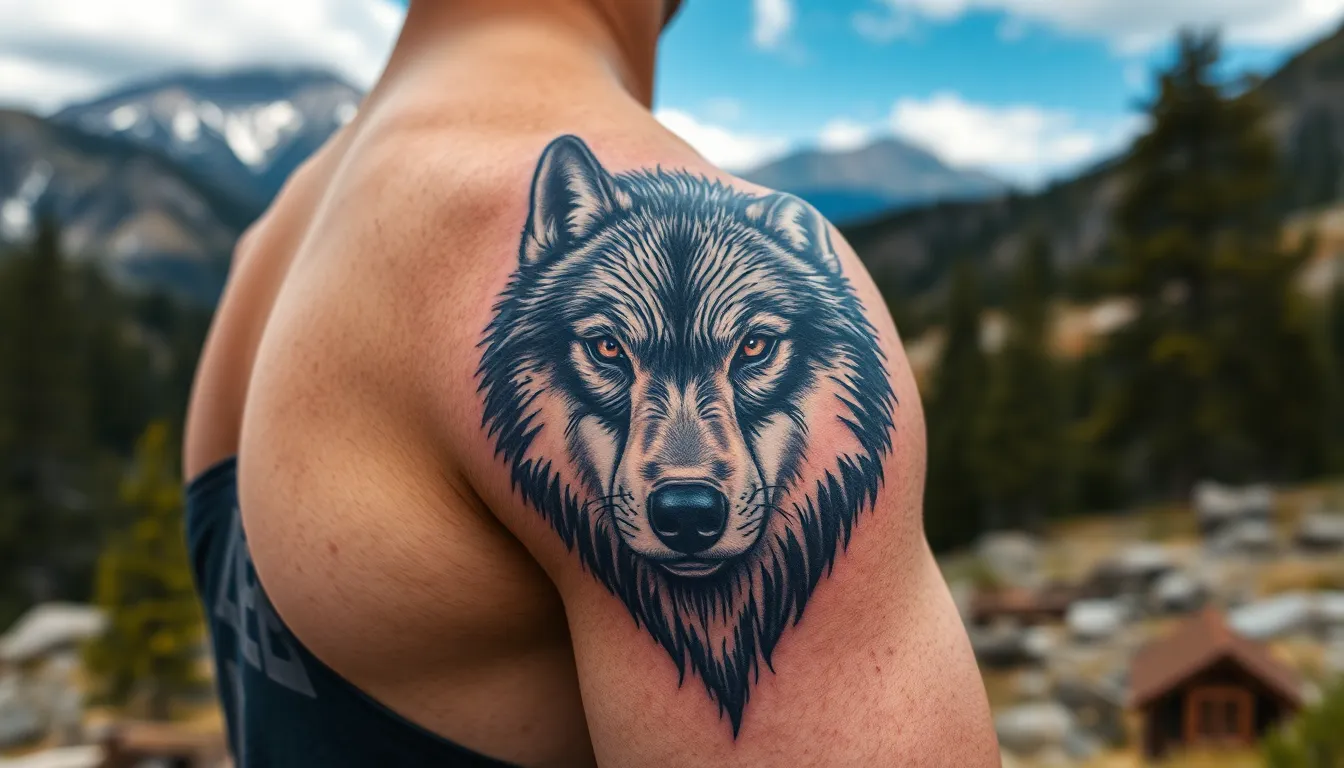
Wolf tattoos embody universal themes that transcend cultural boundaries, representing fundamental human values and aspirations. These core meanings form the foundation of why individuals choose wolf imagery to express their personal identity and values.
Loyalty and Pack Mentality
Loyalty represents the most recognized symbolic meaning of wolf tattoos among contemporary body art enthusiasts. Wolves demonstrate unwavering devotion to their pack members throughout their entire lives, creating bonds that survive even the harshest conditions. Pack mentality in wolf tattoos symbolizes the importance of family connections, team cooperation, and collective strength over individual achievement.
Wolf pack dynamics showcase how these animals prioritize group welfare above personal needs, making this symbolism particularly meaningful for individuals who value community bonds. The alpha and beta roles within wolf societies translate into tattoo meanings that celebrate both leadership and supportive partnership roles. Pack hunters coordinate their efforts to achieve common goals, reflecting human desires for meaningful collaboration and shared purpose.
Freedom and Independence
Freedom emerges as a defining characteristic of wolf symbolism, distinguishing these designs from domesticated animal tattoos. Wild wolves roam vast territories without human constraints, embodying the untamed spirit that many tattoo wearers seek to express. Independence in wolf tattoos represents self reliance, personal autonomy, and the courage to forge one’s own path through life.
Territorial behavior of wolves translates into personal boundary setting and the protection of individual space and values. The wolf’s ability to survive in harsh wilderness conditions symbolizes human resilience and adaptability when facing life challenges. Free roaming wolves reject confinement and control, making them powerful symbols for individuals who resist societal pressures and conventional limitations.
Strength and Power
Physical strength defines the wolf’s reputation as an apex predator, making these tattoos popular among individuals who want to project power and capability. Wolves possess muscular builds, powerful jaws, and endurance that allows them to hunt prey much larger than themselves. This raw physical power translates into tattoo meanings that celebrate human strength, determination, and the ability to overcome obstacles.
Mental fortitude represents another dimension of wolf strength, as these animals demonstrate psychological resilience in extreme environments. Alpha wolves command respect through their confident presence and decisive leadership during critical moments. The wolf’s reputation as a formidable predator creates tattoo symbolism that appeals to individuals who want to project authority and intimidating presence.
Intelligence and Cunning
Intelligence distinguishes wolves as strategic hunters who use complex problem solving skills to capture prey and navigate environmental challenges. Wolf tattoos symbolize mental acuity, strategic thinking, and the ability to adapt tactics based on changing circumstances. These animals demonstrate sophisticated communication systems, coordinated hunting strategies, and learning capabilities that surpass many other species.
Cunning represents the wolf’s ability to outsmart both prey and competitors through calculated deception and tactical planning. Problem solving behaviors of wolves include tool use, environmental manipulation, and creative approaches to accessing food sources. Strategic patience allows wolves to observe situations carefully before taking decisive action, making these tattoos meaningful for individuals who value thoughtful planning over impulsive behavior.
Popular Wolf Tattoo Designs and Their Meanings
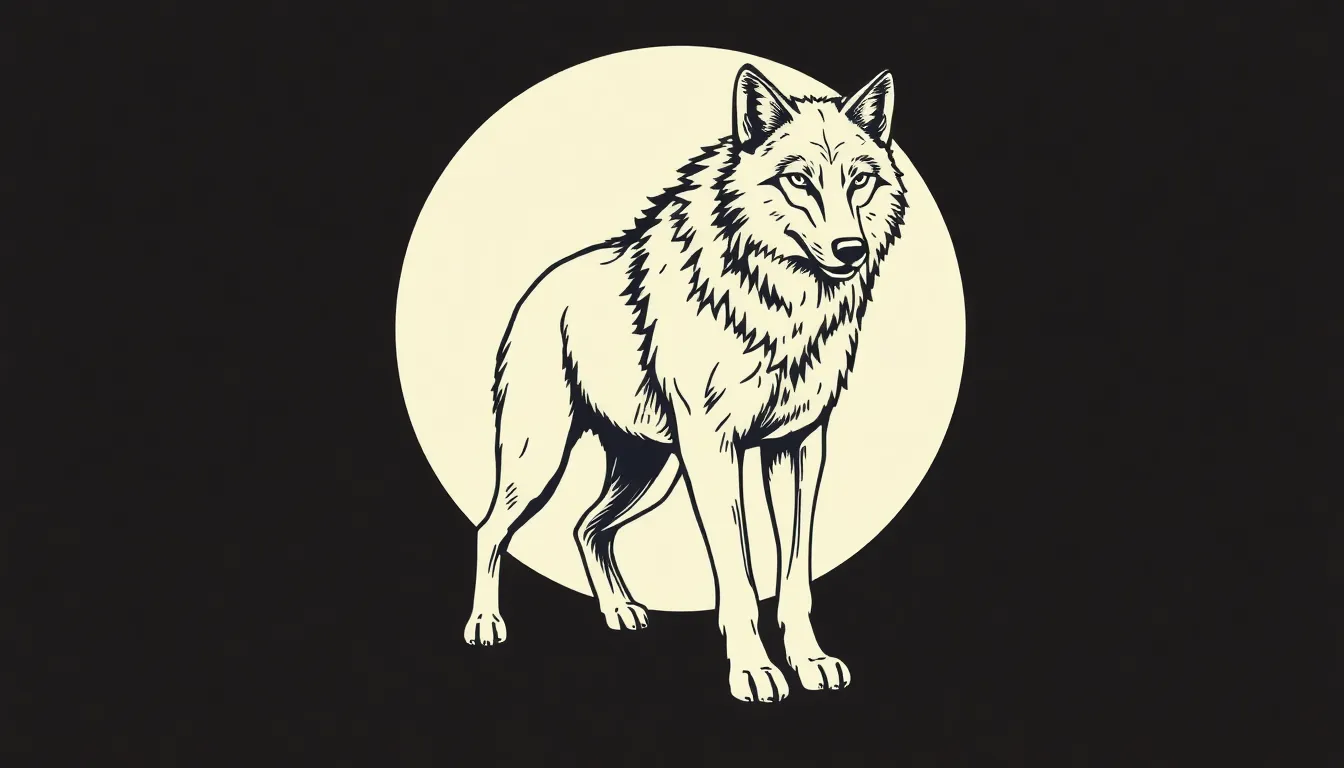
Popular wolf tattoo designs offer distinct visual representations of the symbolic meanings we’ve explored. Each design style carries exact connotations that resonate with different aspects of the wolf’s character and mythology.
Lone Wolf Tattoos
Lone wolf tattoos celebrate independence and self-reliance as primary themes. These designs typically feature a single wolf in various poses, emphasizing solitude and personal strength. Artists often portray the lone wolf walking away from the viewer, symbolizing the journey of self-discovery and autonomy.
Solo wolf designs appeal to individuals who value personal freedom over group dynamics. The imagery represents those who prefer forging their own paths rather than following conventional routes. Many people choose lone wolf tattoos to commemorate periods of personal growth, career changes, or life transitions that required individual courage.
Common elements in lone wolf tattoos include minimal backgrounds, stark silhouettes, and emphasis on the wolf’s confident posture. The positioning often shows the wolf in motion, suggesting forward progress and determination to overcome obstacles independently.
Wolf Pack Tattoos
Wolf pack tattoos emphasize family bonds and community strength through multiple wolf figures. These designs showcase the collective power of wolves working together, representing loyalty to loved ones and the importance of supportive relationships. Pack configurations typically display wolves in organized formations, highlighting their natural hierarchy and cooperative nature.
Family oriented individuals gravitate toward wolf pack tattoos to honor their commitment to relatives, friends, or chosen family members. The designs often feature adult wolves protecting younger ones, symbolizing parental dedication and generational wisdom. Military personnel, team athletes, and close-knit friend groups frequently select these tattoos to represent their unbreakable bonds.
Pack tattoos incorporate ever-changing compositions with wolves in various sizes and positions. Artists arrange the wolves to create visual flow while maintaining the sense of unity and shared purpose that defines pack behavior.
Howling Wolf Designs
Howling wolf tattoos capture the essence of communication and spiritual connection through powerful vocal imagery. The distinctive upward head position and open mouth create dramatic visual impact while representing the wolf’s ability to bridge earthly and spiritual realms. These designs emphasize the wolf’s role as a messenger between worlds.
Artistic interpretations of howling wolves often include sound waves, musical notes, or ethereal elements to enhance the communicative aspect. The howl symbolizes calling out to kindred spirits, expressing inner truth, and maintaining connections across distances. Many people choose howling wolf tattoos to represent their desire to speak authentically or honor lost loved ones.
Design variations range from realistic portraits capturing the exact moment of vocalization to stylized versions incorporating geometric patterns or tribal elements. The neck and throat area of the wolf receives particular artistic attention, emphasizing the source of the powerful call.
Wolf and Moon Combinations
Wolf and moon combinations merge lunar symbolism with wolf characteristics to create deeply mystical tattoo designs. The moon represents cycles, intuition, and feminine energy, complementing the wolf’s connection to natural rhythms and spiritual guidance. These paired elements enhance the overall symbolic impact of the tattoo.
Full moon backgrounds create dramatic contrast against wolf silhouettes, while crescent moons often frame wolf portraits for elegant compositions. The lunar phases incorporated into these designs can represent personal transformation, emotional cycles, or important life events tied to exact dates. Many individuals select wolf and moon tattoos to honor their nocturnal nature or spiritual practices.
Artists frequently add stars, clouds, or forest landscapes to complete the nighttime scene. The interplay between the wolf’s earthbound presence and the moon’s celestial energy creates powerful visual metaphors for the connection between physical and spiritual existence.
Choosing the Right Wolf Tattoo for You
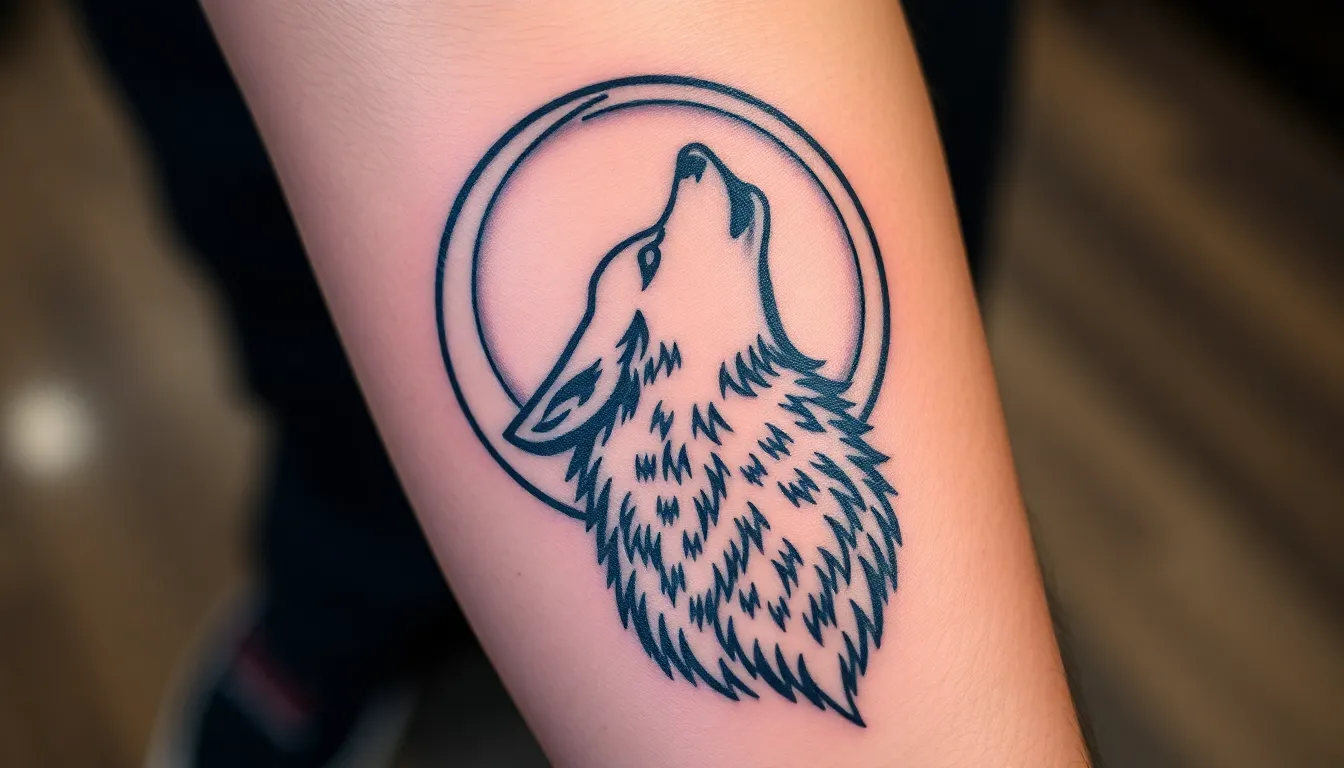
Selecting a wolf tattoo requires careful consideration of your personal connection to wolf symbolism and practical design elements. We guide you through the essential factors that determine the perfect wolf tattoo for your unique journey.
Personal Connection to Wolf Symbolism
Identifying your strongest connection to wolf characteristics helps determine the most meaningful design for your tattoo. We recommend examining which wolf traits resonate most deeply with your personality and life experiences before choosing a exact design.
Loyalty and Family Values: Consider pack-themed designs if family bonds and unwavering loyalty define your core values. Pack tattoos featuring multiple wolves work best for individuals who prioritize community connections and collective strength over individual pursuits.
Independence and Self-Reliance: Choose lone wolf designs when personal autonomy and self-sufficiency guide your life philosophy. Single wolf imagery resonates with people who’ve overcome challenges through inner strength and prefer solitary paths to personal growth.
Spiritual and Mystical Connections: Select wolf and moon combinations if you practice spiritual disciplines or feel drawn to mystical symbolism. These designs appeal to individuals who view wolves as spiritual guides and embrace transformation through lunar cycles.
Communication and Expression: Opt for howling wolf designs when self-expression and authentic communication matter most to you. Howling imagery suits people who value honest dialogue and serve as voices for their communities or causes.
Placement and Size Considerations
Tattoo placement directly impacts both visual impact and personal meaning of your wolf design. We analyze how location and scale affect the overall effectiveness of different wolf tattoo styles.
Large-Scale Placements: Back pieces and chest tattoos accommodate detailed pack scenes and complex wolf landscapes effectively. These locations provide sufficient canvas space for intricate shading techniques and multiple design elements that enhance the storytelling aspect.
Medium-Sized Options: Forearm and shoulder placements work excellently for single wolf portraits and howling designs. These areas offer good visibility while maintaining professional appropriateness in most workplace environments.
Smaller Intimate Placements: Wrist and ankle locations suit minimalist wolf silhouettes and symbolic representations perfectly. These discreet placements allow for personal meaning without drawing excessive attention from others.
| Placement | Best Design Types | Visibility Level | Detail Capacity |
|---|---|---|---|
| Back/Chest | Wolf packs, landscapes | Low-Medium | High |
| Forearm/Shoulder | Single wolves, portraits | High | Medium |
| Wrist/Ankle | Silhouettes, symbols | Medium | Low |
Pain Tolerance Factors: Consider that ribcage and spine placements cause more discomfort during tattooing sessions. Areas with more muscle and fat tissue like shoulders and thighs typically produce less painful experiences during the tattooing process.
Aging and Stretching: Account for how skin changes affect tattoo appearance over time when selecting placement locations. Areas with minimal stretching like forearms and calves maintain design integrity better than locations that experience important size fluctuations.
Conclusion
Wolf tattoos offer a powerful way to express our deepest values and personal journey through meaningful body art. These designs connect us to ancient wisdom while reflecting our modern desire for authentic self-expression.
Whether we’re drawn to the loyalty of pack dynamics or the independence of the lone wolf our choice reveals something profound about who we are. The rich symbolism spanning cultures and centuries ensures these tattoos remain timelessly relevant.
We encourage anyone considering a wolf tattoo to reflect deeply on which aspects of wolf symbolism resonate most strongly with their personal story. The right design will serve as a lasting reminder of our inner strength and the values that guide us through life’s challenges.
Frequently Asked Questions
What do wolf tattoos symbolize?
Wolf tattoos symbolize loyalty, family bonds, independence, and survival. They represent the strong pack mentality of wolves, emphasizing dedication to loved ones and community. These tattoos also embody leadership qualities, spiritual guidance, and resilience in overcoming challenges. The symbolism varies based on design but consistently reflects powerful traits like strength, intelligence, and freedom from societal constraints.
What is the spiritual meaning of a wolf tattoo?
Wolf tattoos carry deep spiritual significance, particularly in Native American traditions where wolves are viewed as sacred teachers and spiritual guides. They represent the connection between the physical and spiritual worlds, often serving as messengers or protectors. The spiritual meaning emphasizes wisdom, intuition, and the ability to navigate life’s challenges with ancient knowledge and inner strength.
What does a lone wolf tattoo represent?
A lone wolf tattoo celebrates independence, self-reliance, and personal strength. It symbolizes someone who values autonomy and is comfortable walking their own path without relying on others. This design often represents the journey of self-discovery, individual resilience, and the courage to stand alone when necessary while maintaining inner strength and determination.
What is the difference between wolf pack and lone wolf tattoos?
Wolf pack tattoos emphasize family bonds, community strength, and loyalty to loved ones, typically featuring multiple wolves in organized formations. Lone wolf tattoos focus on independence, self-reliance, and personal autonomy, usually depicting a single wolf. Pack designs suit those who value family connections, while lone wolf designs appeal to individuals who prioritize independence and self-sufficiency.
What does a howling wolf tattoo mean?
A howling wolf tattoo symbolizes communication, spiritual connection, and the wolf’s role as a messenger between worlds. It represents the ability to express oneself authentically, call upon inner strength, and connect with spiritual guidance. This design often appeals to those who value clear communication, spiritual practices, and the power of finding their voice in challenging situations.
Where should I place my wolf tattoo?
Wolf tattoo placement depends on design size and personal preference. Large, detailed designs work best on the back, chest, or thigh for maximum visual impact. Medium-sized tattoos suit the forearm, shoulder, or calf, while smaller designs look great on the wrist, ankle, or behind the ear. Consider pain tolerance and how the tattoo will age when choosing placement.
Are wolf tattoos suitable for both men and women?
Yes, wolf tattoos are popular among both men and women. The symbolism of loyalty, strength, family bonds, and independence appeals universally. Design styles can be adapted to personal preferences, from bold, realistic wolves to delicate, artistic interpretations. The meaningful symbolism transcends gender, making wolf tattoos a versatile choice for anyone who connects with their powerful characteristics.
What does a wolf and moon tattoo symbolize?
Wolf and moon tattoos combine lunar symbolism with wolf characteristics, creating mystical designs that represent personal transformation, intuition, and spiritual practices. The moon adds elements of femininity, cycles, and hidden knowledge, while the wolf contributes strength and loyalty. This combination often symbolizes the balance between wild instincts and spiritual wisdom, appealing to those drawn to mystical themes.

